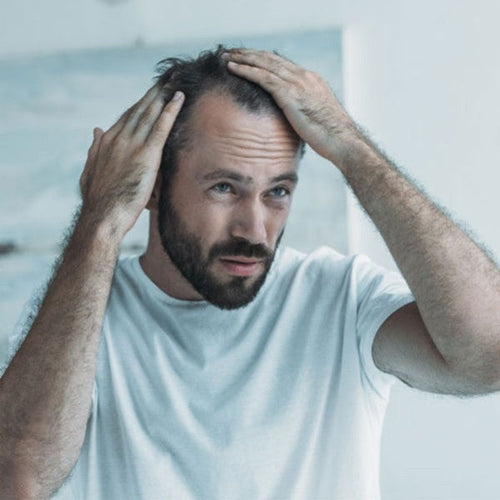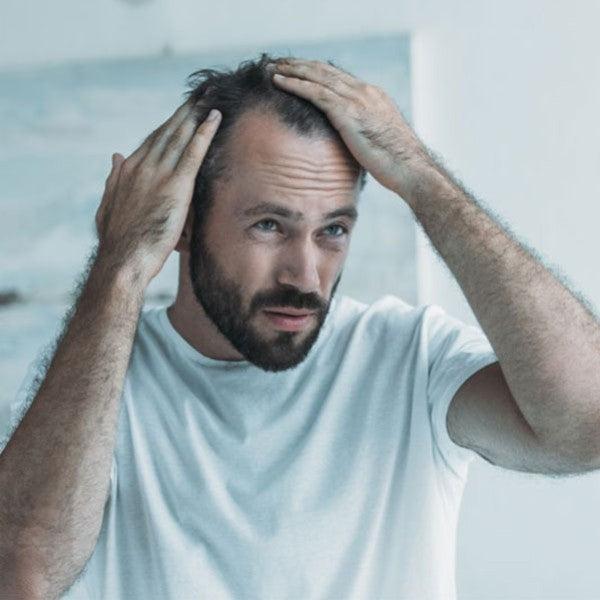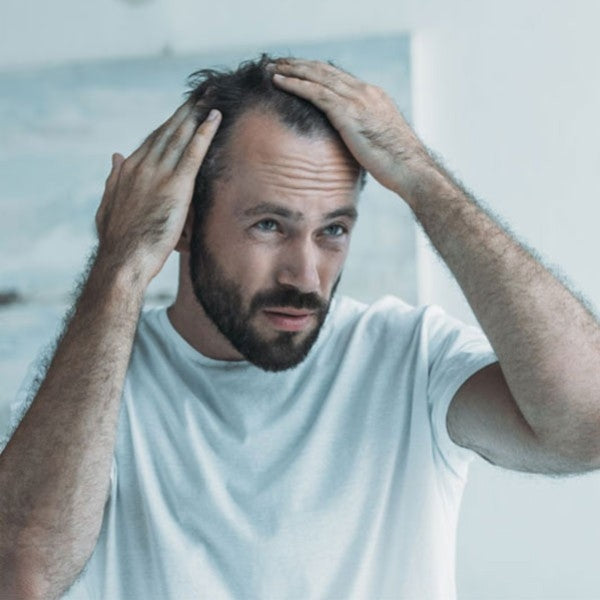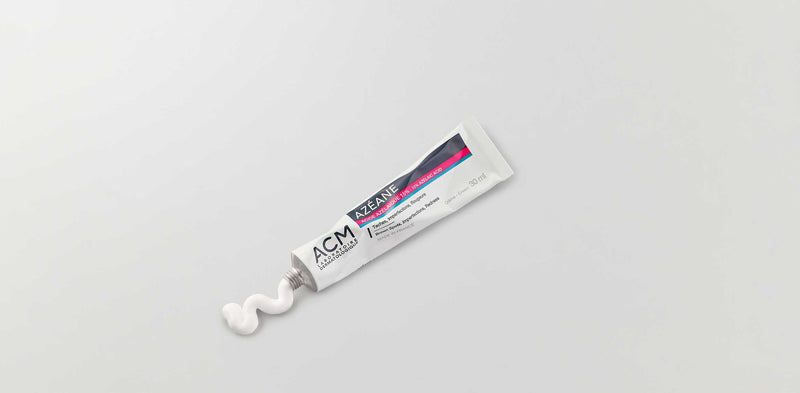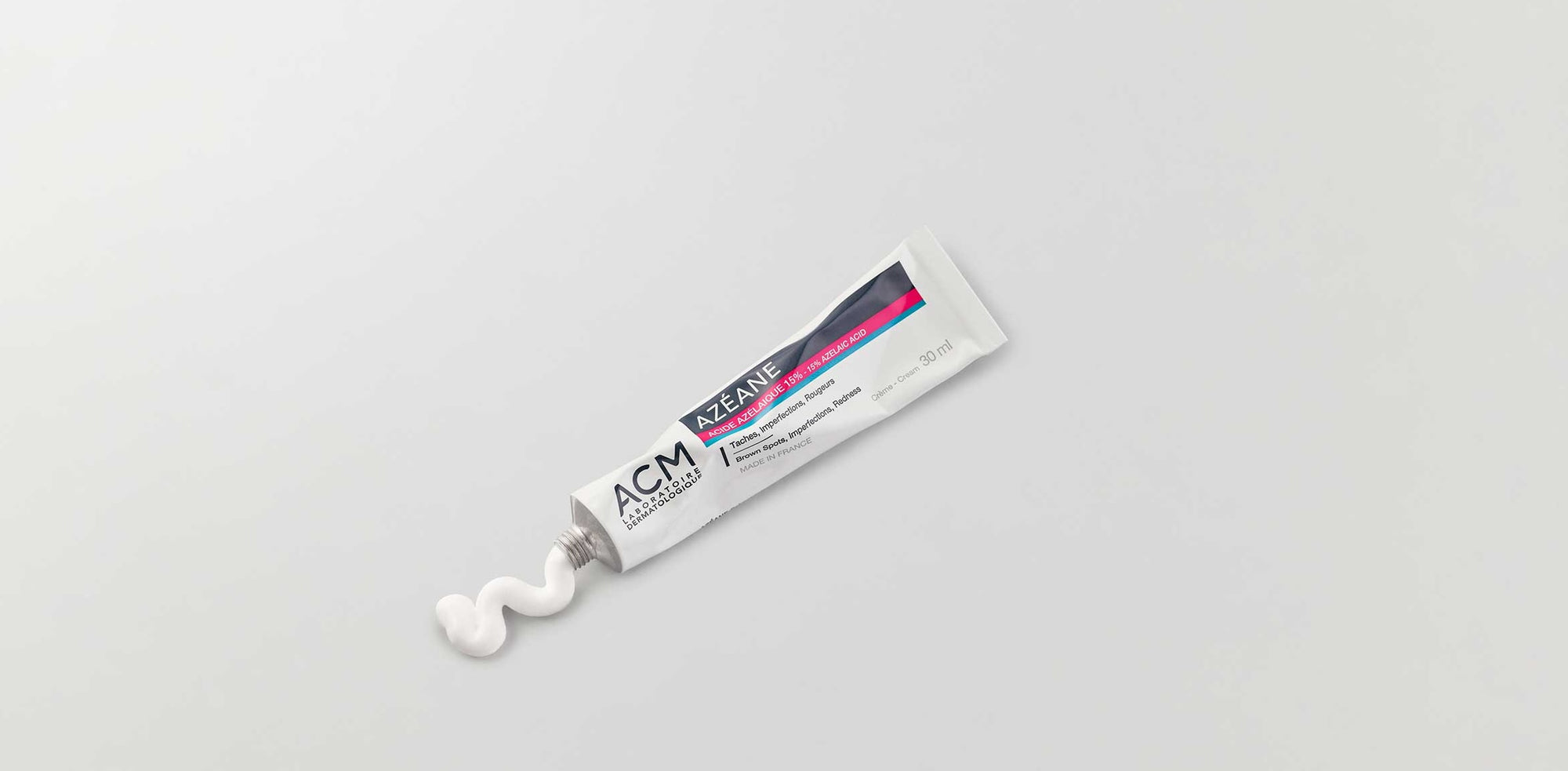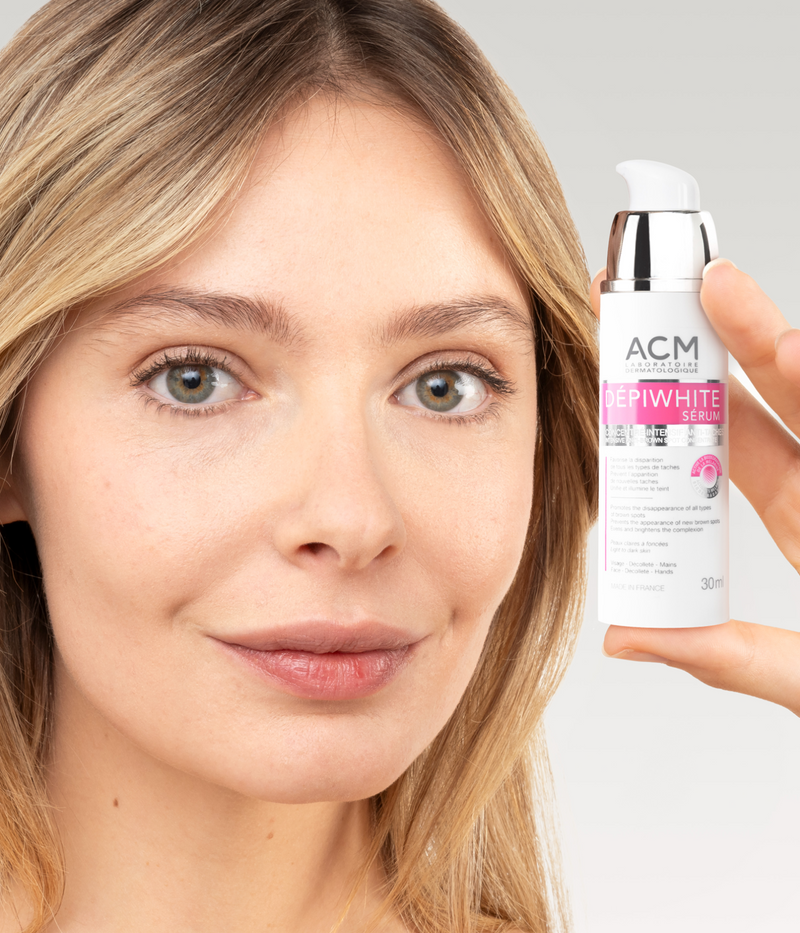What is alopecia?
Alopecia is a medical condition characterized by partial or total hair loss, which can affect the scalp as well as other parts of the body. The term comes from the Greek "alopex", which means "fox", in reference to the abundant loss of the canine's fur each spring.
Scarring Alopecia vs. Non-Scarring Alopecia
Alopecia can be classified into two main categories: scarring and non-scarring. Understanding these distinctions is crucial in determining the appropriate treatment plan.
What is scarring alopecia?
Cicatricial alopecia is characterized by the permanent destruction of hair follicles, often due to inflammation or trauma to the skin. This form of alopecia can be caused by a variety of factors, including inflammatory skin diseases such as systemic lupus erythematosus, scleroderma, dermatitis decalvans, or severe burns.
What is non-scarring alopecia?
Unlike scarring alopecia, non-scarring alopecia is often reversible. It can result from a variety of causes, including genetic factors, hormonal changes, or autoimmune disorders such as systemic lupus erythematosus, polyglandular autoimmune syndrome, or Hashimoto's thyroiditis.
What are the different classifications of alopecia according to its severity?
Understanding alopecia relies on an accurate assessment of its severity, guided by classification tools such as the Hamilton-Norwood scale for male pattern baldness and the Ludwig scale for female pattern baldness. These scales play a crucial role in establishing a diagnosis, allowing healthcare professionals to categorize hair loss into specific stages, ranging from mild to advanced, and then provide appropriate treatment.
The Hamilton-Norwood Scale for Male Pattern Alopecia
The Hamilton-Norwood scale is a commonly used classification method to assess the severity of male pattern baldness. It is used to determine the stage of hair loss, ranging from mild to severe. In milder stages, there may be recession at the temples, while in more advanced stages, baldness may reach the crown of the head. This scale provides a visual basis for understanding the progression of male pattern hair loss.
The Ludwig Scale for Female Alopecia
The Ludwig scale is specifically designed to assess alopecia in women. It provides a detailed understanding of female hair loss in different stages: milder hair loss may present diffuse thinning, while more advanced hair loss may be more pronounced on the upper part of the scalp.
Androgenetic alopecia
Also called “pattern baldness,” androgenetic alopecia is strongly linked to genetic and hormonal factors. It manifests itself differently in men and women, with increased sensitivity of hair follicles to androgen hormones, particularly dihydrotestosterone (DHT).
Drug treatments
Some medications can cause temporary hair loss. These include:
- Anticoagulants;
- Vitamin A derivatives (retinoids);
- Antidepressants;
- Contraceptive pill;
- Medications for high blood pressure;
- Immunosuppressants;
- Antithyroid drugs;
- Medications for gout (colchicine);
- Medicines for epilepsy (trimethadione and sodium valproate).
The hair recovery process depends on the type and duration of treatment.
What are the effects of chemotherapy on hair loss?
Cytotoxic agents used in cancer treatment have significant side effects, including hair loss. Hair loss usually occurs two to three weeks after starting treatment and, in the majority of cases, is temporary.
According to the website of the Gustave Roussy center, the leading center for the fight against cancer in Europe, the use of a cooling helmet , to be placed on the head during chemotherapy, would help limit alopecia caused by anticancer drugs.
Traction alopecia
Very tight hairstyles (braids, ponytails, buns, etc.), wearing extensions and frequent use of accessories that pull on the hair can lead to so-called "traction" alopecia. Excessive pressure on the roots weakens and eventually pulls out the hair, most often at the temples and forehead.

Scalp infections
Some scalp infections can cause severe inflammation, damaging hair follicles and potentially leading to alopecia. These include:
- Ringworm;
- Impetigo;
- Seborrheic dermatitis;
- Scalp cellulite.
Most of these infectious diseases are treatable with appropriate treatment (antifungal medications, antibiotics, etc.). Once the infectious agent is eliminated, regrowth can occur, although some areas of the scalp may show permanent damage.
What are the first symptoms of alopecia?
The first symptoms of alopecia can vary depending on the type of hair loss.
Signs to watch for include:
- Excessive hair loss;
- Thinning hair;
- Appearance of thinning areas of scalp;
- Itchy scalp.

When to consult for suspected alopecia?
When symptoms persist (or worsen), making an appointment with a healthcare professional, particularly a dermatologist, allows for an accurate diagnosis. Depending on the doctor's assessment, treatment may be proposed to stop hair loss and promote regrowth.
How is alopecia diagnosed?
According to the website of the French Society of Dermatology, several examinations can be carried out by the dermatologist to make a diagnosis:
- Clinical analysis to assess hair loss;
- Microscopic analysis of an area of the scalp to determine the overall health of the hair follicles (trichogram);
- Monitoring through regular photo taking;
- Scalp biopsy;
- Blood tests, Analysis of medical, family and hormonal history;
- Pull test to assess hair strength.
The combination of these tests allows the doctor to obtain a complete picture of the situation, identify the underlying cause of the alopecia and then propose a personalized treatment protocol.
How to treat alopecia?
There are several therapeutic approaches to treating alopecia, ranging from drug options to surgical procedures and wearing a medical wig. Depending on the doctor's recommendations, certain treatments can be combined to optimize the chances of regrowth but also improve the patient's quality of life.
Drug treatments for alopecia
Minoxidil is a topical medication that promotes hair growth and can be used by both men and women.
Finasteride works by blocking the effects of certain hormones that cause hair loss. It is prohibited for women and professional athletes.
Corticosteroids may be applied topically to reduce inflammation and stimulate hair regrowth.
Surgical treatments for alopecia
Surgical treatments for alopecia aim to restore hair density by implanting new hair follicles in the affected areas. Two main techniques are widely used: hair transplantation and the strip harvesting technique, both performed by a specialized surgeon.
Hair transplantation by extraction
Hair transplantation is becoming increasingly popular among men suffering from pattern baldness (also known as "androgenetic alopecia"), despite its high cost, long recovery time and non-guaranteed results.
Once the head is completely shaved, individual hair follicles are extracted one by one from the patient's scalp using an automated or manual harvesting device, under local anesthesia to relieve pain. The extracted follicles are then sorted into grafts and implanted into the recipient areas, following a natural pattern to ensure the most harmonious result possible. The final results can be assessed approximately one year after surgery, once the transplanted hair has had time to grow fully.
The tape sampling
Another technique but which gives equivalent results, strip harvesting consists of cutting a strip of scalp on the donor area (most often, the temporal area), from which the grafts are then taken. They are then sorted and implanted one by one. The number of grafts that can be harvested in a single session can be higher compared to a hair transplant by extraction, but the scar can be visible if the hair is worn short.
Food supplements
While a varied and balanced diet remains the best approach to maintaining healthy hair, food supplements can provide a helping hand in the event of deficiencies revealed by a blood test. The most interesting essential nutrients in the event of hair loss are:
- Biotin
- Vitamin B
- Vitamin D
- Zinc
- The iron
- Omega-3 and 6
What care routine for hair loss?
To slow the progression of alopecia and encourage regrowth, it is wise to adopt an anti-hair loss hair care routine. In addition to a specific shampoo, which gently cleanses the hair while stimulating the scalp, the daily application of a leave-in lotion at the roots can help increase hair density, strengthen fragile hair and encourage regrowth.

How to live with alopecia?
Alopecia can be particularly difficult to live with for men, women, adults and children affected. In addition to regular consultations with a dermatologist, in order to obtain a diagnosis and then monitor the progress of the treatment(s) recommended by the doctor, psychological support provided by a health professional can be beneficial in order to regain good self-esteem.
Associations, such as La Tresse , offer discussion and support groups that provide a caring space for people suffering from hair loss.
Hair supplements
In order to alleviate the effects of alopecia and lead a near-normal life, it is possible to opt for a hair supplement. Depending on the needs and budget, it can be a wig or a custom-made prosthesis. The variety of styles, colors and textures available allows people affected by alopecia to maintain a look that matches their identity. From long and wavy hairstyles to very trendy short cuts, the options are vast.
GOOD TO KNOW
In France, according to the Health Insurance website, people with alopecia can benefit from 100% coverage of their wig or accessories to hide the loss of all their hair, as part of a medical prescription.
